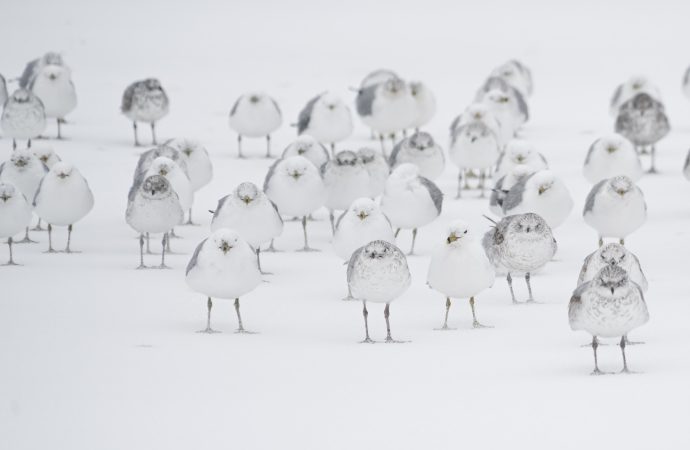As the world grapples with the consequences of climate change, its impact on various ecosystems and wildlife continues to unfold. One of the surprising effects of global warming on bird populations is a remarkable transformation in their bodies and wingspan. In this article, we delve into the unexpected ways climate change is shaping avian physiology
As the world grapples with the consequences of climate change, its impact on various ecosystems and wildlife continues to unfold. One of the surprising effects of global warming on bird populations is a remarkable transformation in their bodies and wingspan. In this article, we delve into the unexpected ways climate change is shaping avian physiology and the potential implications for these iconic creatures.
Research conducted by scientists from around the world has unveiled a concerning trend: many bird species are experiencing a reduction in body size while their wingspan is increasing. This phenomenon, known as “shrink and stretch,” is a response to the changing environmental conditions caused by climate change.
The shrinking body size of birds can be attributed to several factors. Warmer temperatures, resulting from climate change, lead to decreased food availability, which directly affects the growth and development of birds. With limited access to resources, birds are forced to adapt their body size to survive in a changing ecosystem. Smaller bodies require fewer resources to sustain, allowing them to cope with the diminishing food sources.
Conversely, the growing wingspan of birds is an adaptation to the altered weather patterns associated with climate change. Increased temperatures and changing wind patterns influence flight conditions and the availability of suitable habitats. Birds with longer wingspans have an advantage in navigating these evolving landscapes, enabling them to migrate over longer distances and access new food sources.
These changes in body size and wingspan have profound implications for bird populations. Smaller body sizes may impact reproductive success, as it can affect a bird’s ability to find sufficient food, attract mates, and raise offspring. Furthermore, alterations in wing morphology can lead to shifts in flight behavior and migration patterns, potentially disrupting long-established ecological relationships.
One example of the “shrink and stretch” phenomenon is evident in the great tit (Parus major) population in the United Kingdom. A study published in the journal Nature Communications found that over a 40-year period, these birds displayed a decrease in body mass, likely in response to warmer temperatures and the associated reduction in food availability. In contrast, their wingspan increased, potentially facilitating longer migrations and access to new foraging areas.
While the ability of birds to adapt to changing conditions is remarkable, it is important to acknowledge the limitations and challenges they face. Rapid and extreme shifts in body size and wingspan can strain physiological and behavioral capacities, potentially leading to population declines and reduced biodiversity.
The implications of climate change’s impact on birds extend beyond their own survival. Birds play vital roles in ecosystems as pollinators, seed dispersers, and insect controllers. Changes in their physiology and distribution can disrupt these ecological functions, with cascading effects on plant communities and other wildlife.
As climate change continues unabated, understanding the adaptive strategies of birds becomes essential for conservation efforts. Protecting and restoring diverse habitats, promoting sustainable land management practices, and reducing greenhouse gas emissions are crucial steps in mitigating the impact of climate change on avian populations.
In conclusion, the surprising “shrink and stretch” phenomenon observed in bird populations serves as a visible reminder of the profound effects of climate change. As environmental conditions shift, birds are adapting by altering their body size and wingspan. However, these adaptations may come at a cost, with potential repercussions for their reproductive success and ecological functions. Recognizing and addressing the challenges faced by birds in a changing world is essential for ensuring their survival and the preservation of our natural ecosystems.

















Leave a Comment
Your email address will not be published. Required fields are marked with *